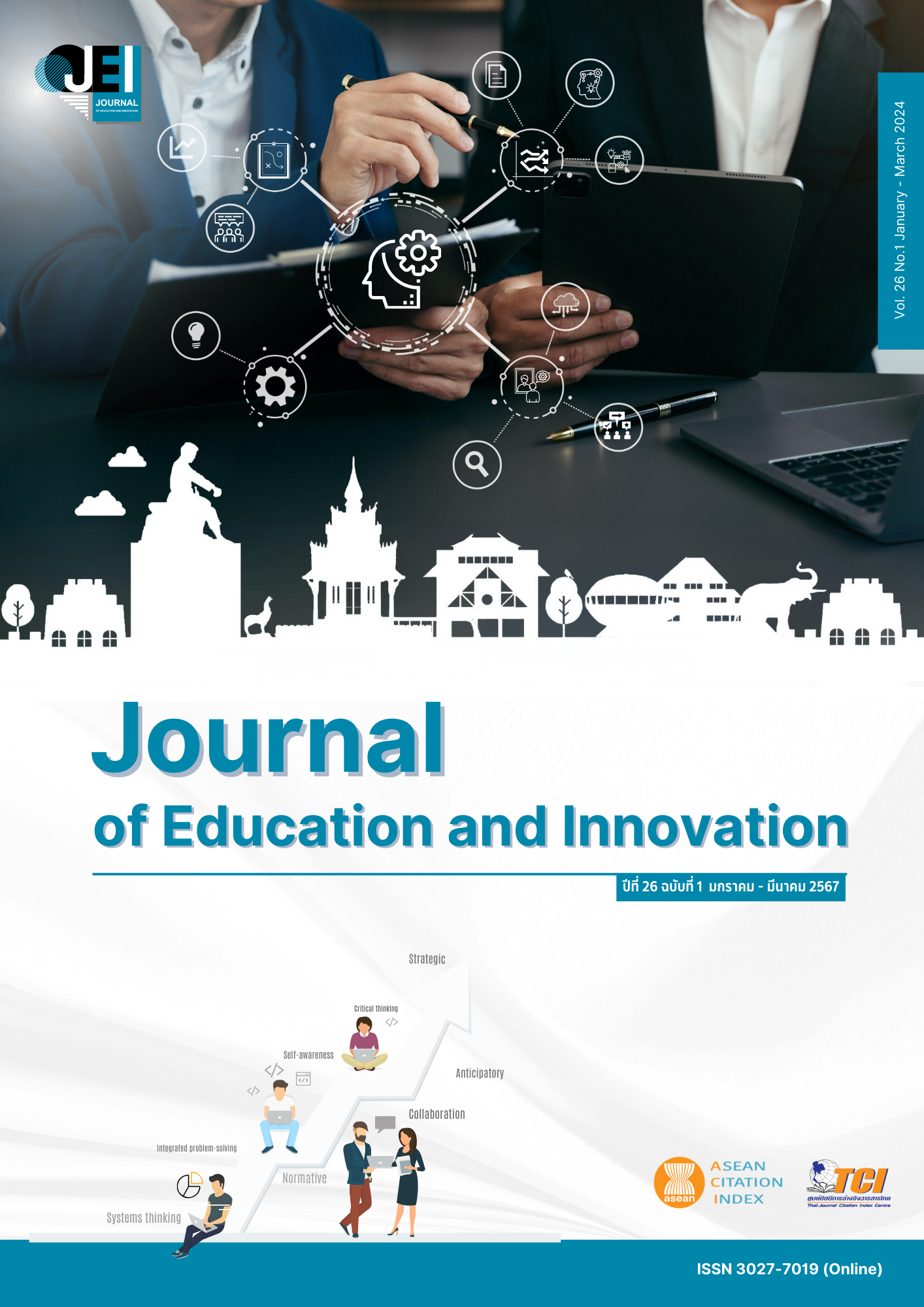INCLUSION IN PHYSICAL EDUCATION FOR GENERATION ALPHA
Main Article Content
Abstract
Generation Alpha are people born in 2010 who have grown up with the development of technology and are accustomed to change and are more open to differences in terms of language, culture, fashion, identity, and way of life. While the current classrooms appear to be inclusive learning with students of diverse nationalities. social class, sexual orientation, ability, religious and cultural affiliation. Whereas they deserve the right to quality education for self-improvement in knowledge, skills and values are geared. Towards membership in a society with sound physical and mental health. It is therefore essential for health and physical education teachers to recognize those diversity which will bring success to students according to the way of each person based on gender, family, community, society, socio-economic status, language and culture or any other that indicates the identity of the learner. One of the challenges for teachers is having an inherent belief and commitment to the focus of all learners by having knowledge in co-learning in health and physical education, including showing plans for learning that are suitable for diverse learners. It will contribute to the birth of a new era of peaceful social structures in Generation Alpha where people respect each other's ways.
Article Details

This work is licensed under a Creative Commons Attribution-NonCommercial-NoDerivatives 4.0 International License.
The owner of the article does not copy or violate any of its copyright. If any copyright infringement occurs or prosecution, in any case, the Editorial Board is not involved in all the rights to the owner of the article to be performed.
References
An, J., & Meaney, K. (2015). Inclusion practices in elementary physical education: A social-cognitive perspective. International Journal of Disability, 62. DOI:10.1080/1034912X.2014.998176
Bureau of Academic Affairs and Educational Standards, (2018). Basic Educational Core Curriculum. Bangkok: Ministry of Education.
Davis, K., (2010). Physical educators must address diversity now! Journal of Physical Education, Recreation & Dance, 81(2), 4-5.
Deborah T., & Siedentop, D. (1999). Developing teaching skills in physical education (4th ed.). Mayfield.
DEEWR (Department of Education, Employment and Workplace Relations). (2009). Belonging, Being and Becoming: The Early Years Learning Framework for Australia. Canberra: DEEWR.
Drugas, D. H. (2022). Will their future be? Family Zone. Australia.
Forbes, F. (2007). Towards inclusion: An Australian perspective. Support for Learning, 22(2), 66-71.
Foreman, P. (2008). Inclusion in action (2nd ed.). Melbourne: Cengage Learning.
Hill, J. (2014). Equity and Inclusion in Physical Education and Sport, Second Edition. Adapted physical activity quarterly : APAQ, 31, 297-298. DOI:10.1123/apaq.2014-0180
Institute of Learning Sciences. (2022). The Thailand awareness for next generation. Bangkok: Office of the Prime Minister.
Jacalyn, L., & Mary, L. (2013). Assessment-driven instruction in physical education: A standards-based approach to promoting and documenting learning. United States of America: Human Kinetics.
Jin, J., Yun, J., & Wegis, H. (2013). Changing physical education teacher education curriculum to promote inclusion. Quest, 65, 372–383. DOI: 10.1080/00336297.2013.791869
MCEETYA (Ministerial Council on education, employment, Training and Youth Affairs). (2008). Melbourne Declaration on educational Goals for Young Australians. Retrieved from www.curriculum.edu.au/verve/_resources/National_Declaration_on_the_educational_Goals_for_Young_Australians.pdf
Mccrindle. (2022). Trends of 2022. Australia: New South Wales.
Meet the Mini Millennials: Generation Alpha. (2021). NC State University. Publish Organized.
Office of Knowledge Management and Development. (2020). Thailand in The Future. Bangkok: Office of the Prime Minister.
Saidi, A., Boonhan, S., & Thamathes, J. (2019). Competency of PE Teachers in the 21st Century. e-Journal of Education Studies, Burapha University, 1(4), 14-24.
Savagpun, P. (2020). The physical education curriculum. Phitsanulok: Naresuan University Printing House.
Suktanee, W. (2015). Scenario of physical education curriculum at the higher education level in Thailand toward ASEAN Community (Doctoral dissertation). Bangkok: Chulalongkorn University.
Taba, H. (1962). Curriculum development: Theory and practice. New York: Brace & World.
The Teachers Council of Thailand. (2020). 2021 Annual Report. Bangkok: On-pa.
Tripati, S. (2020). 7 skills for generation alpha children. Bangkok: Asia Book.
Tripp, A., Rizzo, T., & Webbert, L. (2008). Inclusion in physical education: Changing the culture. Journal of Physical Education, Recreation & Dance, 78(2), 1-58. DOI: 10.1080/07303084.2007.10597971
Tyler, R. W. (1971). Basic principle of curriculum and instruction. Chicago: University of Chicago.
Wrench, A., & Garrett, R. (2018). Diversity and inclusion. In K. Petrie and G. Griggs (eds), Routledge Handbook of Primary Physical Education. London: Routledge.


